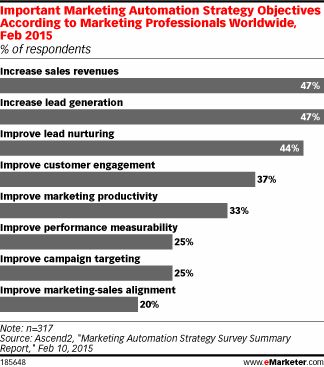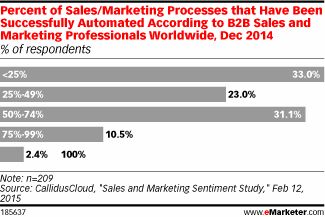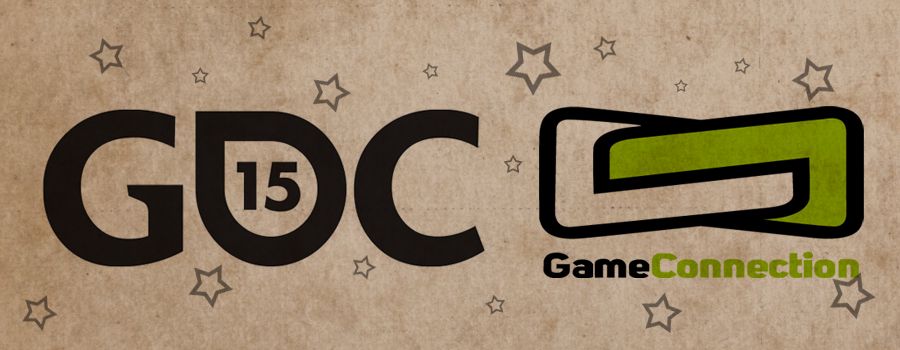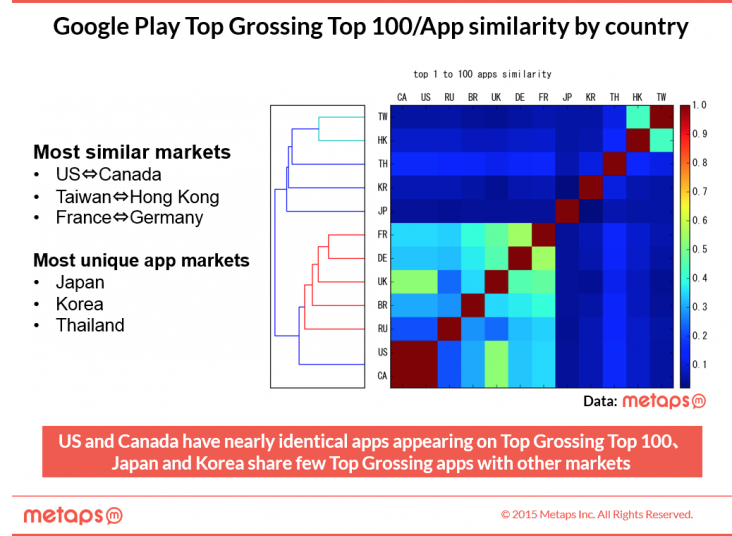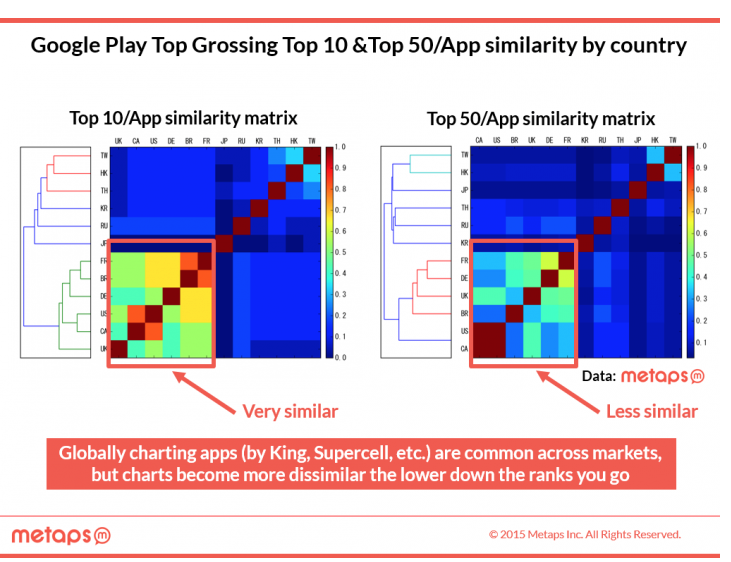Television industry executives better pay attention, because the digital video market isn’t really “just a phase.” At least, not anymore.
A new report from video ad tech firm FreeWheel indicates that digital video operations are on the rise, with a 67 percent overall increase on their fall 2014 TV shows’ digital video ad views. That’s a huge bump from the same numbers in 2013, according to Digiday. That’s over 125 million video views measured by the company.
“That big, granular number shows what content is really driving growth,” said Brian Dutt, author of the report and advisory services director for FreeWheel. “A lot of the audiences coming into digital are coming over for the shows they would have watched on their TV or DVR.”
The overall industry has seen a 215 percent growth in video ad views for the fourth quarter of 2013. The charts below break down some of the finer details.
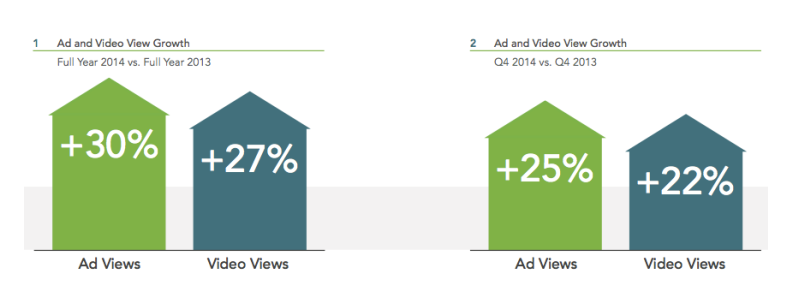
In this chart, you see that traditional television advertising is still popular, but not quite as strong as digital video, as the numbers show a slight difference by about three percent in both categories, including full year and Q4 breakdowns.
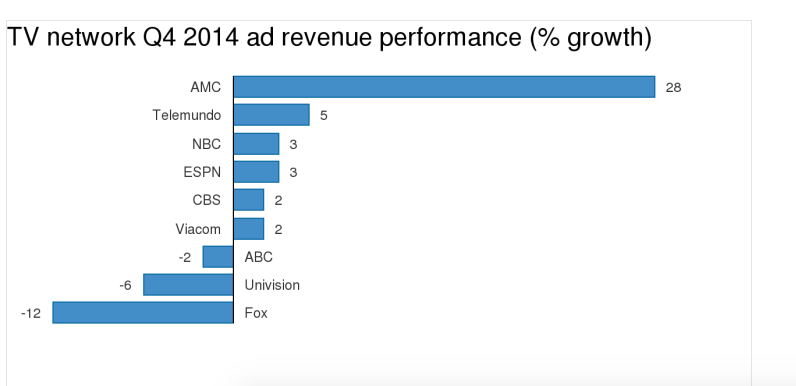
When it comes to ad revenue growth, total ad spend came to $68.5 billion, compared to just $6 billion for digital video the year before. Traditional networks are starting to find more of an audience, but, as you can see, AMC still rules the roost, behind such original programming as Breaking Bad and The Walking Dead.
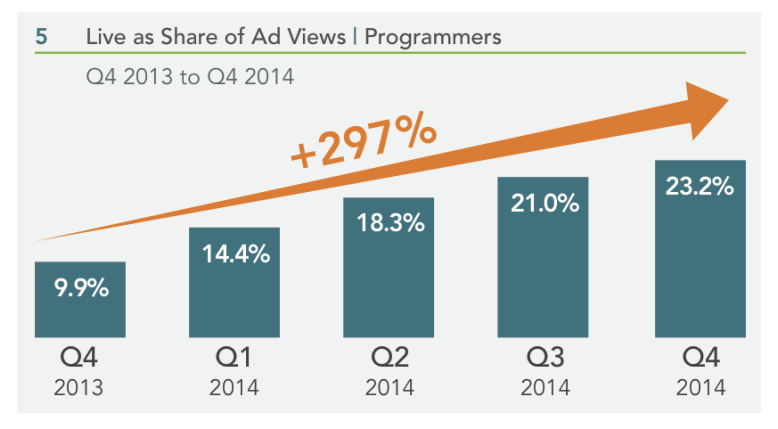
Live sports really make a difference with digital video, and sports play a part in that, along with TV shows and feature films. “Long-form” content, as it’s considered, accounts for 52 percent of overall digital ad views – and, as you can see from the chart above, it’s been rising steadily over each quarter.
“There’s obviously still a long way to go for digital video to match the scale of (traditional television), but it can happen in pretty quick bursts,” said Dutt. “The growth in TV Everywhere and live really speaks to that.
“It starts with the Olympics or World Cup or Super Bowl, these big events where if you’re not near your TV and need to engage with the content, you’re going to do whatever you need to do to watch,” he continued. “Then it becomes a way people want to continue engaging with content.”
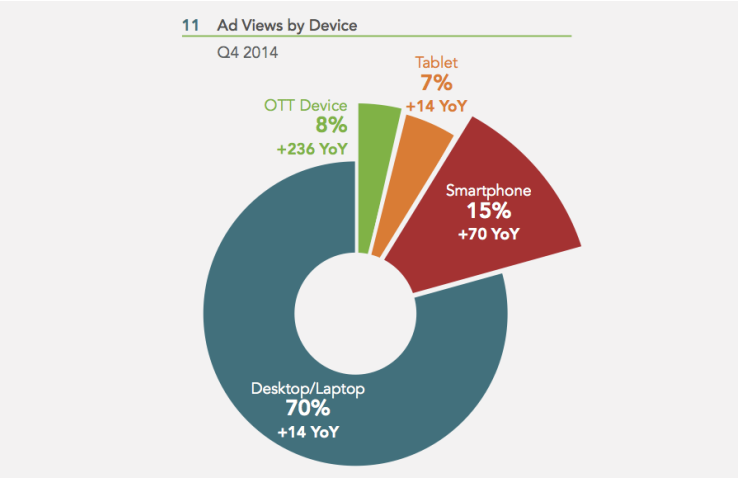
While tablets and mobile devices are key ingredients to digital viewing success, people still prefer set-top boxes and game consoles, like the PlayStation 4, to get their fix, according to this chart. 70 percent of overall views seem to come from a more stable desktop/laptop set-up, compared to only 15 percent for smartphones.
“A lot of the initial usage has been focused on subscription models, and also the download-to-own models,” explained Dutt. “The ad models have been a little bit slower to get into those environments, in part because of measurability issues… but, at the end of the day, the 50-inch screen in your living room has to be the place where people engage with premium content in an ad-supported environment.
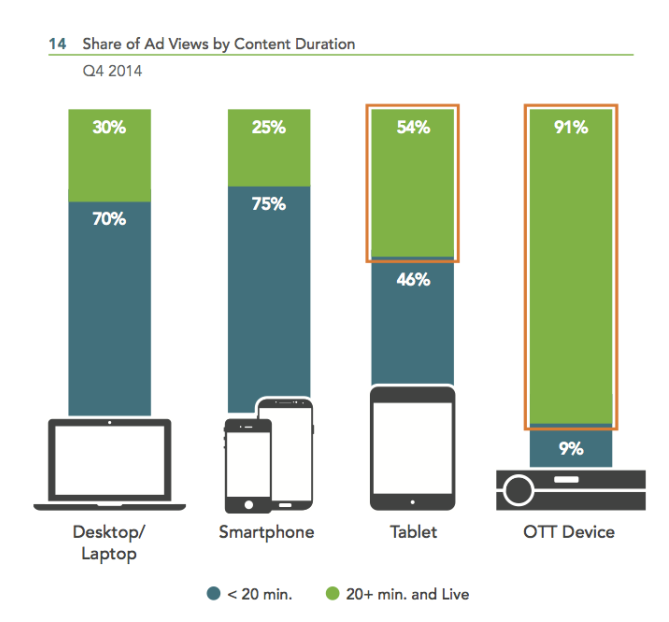
“One day we’re all expecting that (over-the-top) devices will drive the lion’s share of the growth.”
You can learn more details about this report here.
